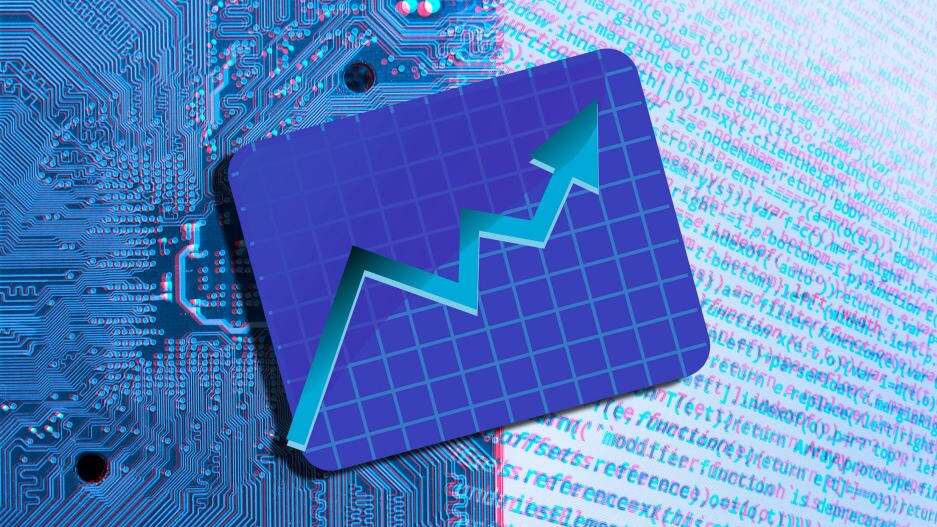- | 9:00 am
How to measure economic output in an AI-assisted world
AI can help us update the ways we process data and improve efficiency, making GDP a more dynamic and useful tool when judging economic performance.

A recent investment bank research article suggested that generative AI could drive a 7% uptick in global GDP. What if, though, such statements were a kind of category error? What if AI were so transformative that it rendered such concepts as GDP outdated, a relic of a past when we needed blunt instruments for two reasons: firstly, because we lacked the tools to intricately measure the world and secondly, because the world itself was less complex and multifaceted?
GDP masks many of our biggest economic challenges. It doesn’t account for the broader follow-on effects of economic activity; it measures an economy’s total output but overlooks that output’s distribution; it doesn’t capture anything about the quality and variety of goods and services that an economy produces; it doesn’t measure some of the most central aspects of a country’s overall well-being, from citizens’ health to their happiness; finally, GDP doesn’t capture all of the non-market transactions which are such a central part of our lives.
In 1968, Senator Robert F. Kennedy claimed that GDP measured “everything except that which makes life worthwhile.” Since then, a number of alternative forms of measurement have been proposed, with the Genuine Progress Indicator (GPI) perhaps the most credible example. It sought to refine GDP by adjusting for both quality of life and environmental impact. Eventually, GPI was discarded—the pull of a widely-understood, easily comparable and expedient measure such as GDP proving too strong.
In the U.K., David Cameron’s government launched the Measuring National Well-Being Program, an attempt to gather data on areas such as health, job satisfaction, and economic security. While the program is still running and has produced a range of interesting insights, its impact has been limited.
This leaves us needing to find ways of updating GDP for the AI revolution. More holistic and inclusive metrics that account for the intangible aspects of economic life are required to fully gauge a country’s growth and prosperity. The world we are measuring is different and the tools at our disposal are different, calling for a revolutionized method of judging economic growth.
AI can help us update the ways we process data and improve efficiency, thereby making GDP (or what we might call AI-GDP) a more dynamic, granular, and, importantly, a more useful tool when judging economic performance. AI could help us capture a much wider range of data with increasing specificity, providing an AI-enhanced measurement that will equate to measuring the world of the present and future.
- The informal economy: AI could analyze alternative data sources such as satellite imagery, mobile payments, social media activity, and online marketplaces to estimate the size and dynamics of the informal economy, which is typically missed by GDP calculations.
- Quality improvements: By processing vast amounts of product review data, user feedback, and other qualitative information, AI could develop metrics to measure improvements in the quality of goods and services that may not be reflected in traditional price indices.
- Real-time economic activity: AI can analyze high-frequency data such as internet searches and traffic patterns to provide real-time insights into economic activity. This could supplement traditional GDP measurements, which are often subject to delays and revisions.
- Non-market activities: By utilizing data from surveys, social media, and other sources, AI could potentially develop estimates of unpaid labor’s value, such as caregiving and household work.
- Personal well-being: AI could analyze social media posts, surveys, and other subjective data to create indices that measure emotional well-being, life satisfaction, and other aspects of personal well-being. Already, countries like Bhutan use measures like Gross National Happiness (GNH) to capture these aspects of quality of life. The United Nations has also adopted Mahbub ul-Haq and Amartya Sen’s Human Development Index (HDI), which also seeks to score countries on measures of wellbeing that are not captured by GDP.
- Environmental impact: AI can process complex environmental data from multiple sources, enabling the development of indices that measure the environmental sustainability of economic activity.
By continuing to obsessively focus on GDP, we’re failing to acknowledge how radically our world has changed over the past several decades and how dramatically it will continue to change with the tailwind of the AI revolution. Some of these measures already exist, but with these new tools the potential for specificity, granularity, and timeliness increases with every passing day. Measurement is one of the fundamental elements of any economy and we need to ensure that the tools we use to judge performance are at the very cutting-edge of sophistication.
Igor Tulchinsky is founder, chairman, and CEO of WorldQuant, a global quantitative asset management firm, and in 2017 launched the WorldQuant Initiative for Quantitative Prediction at Weill Cornell Medicine. His new book, The Age of Prediction: Algorithms, AI, and the Shifting Shadows of Risk, will be published August 22, 2023.







































